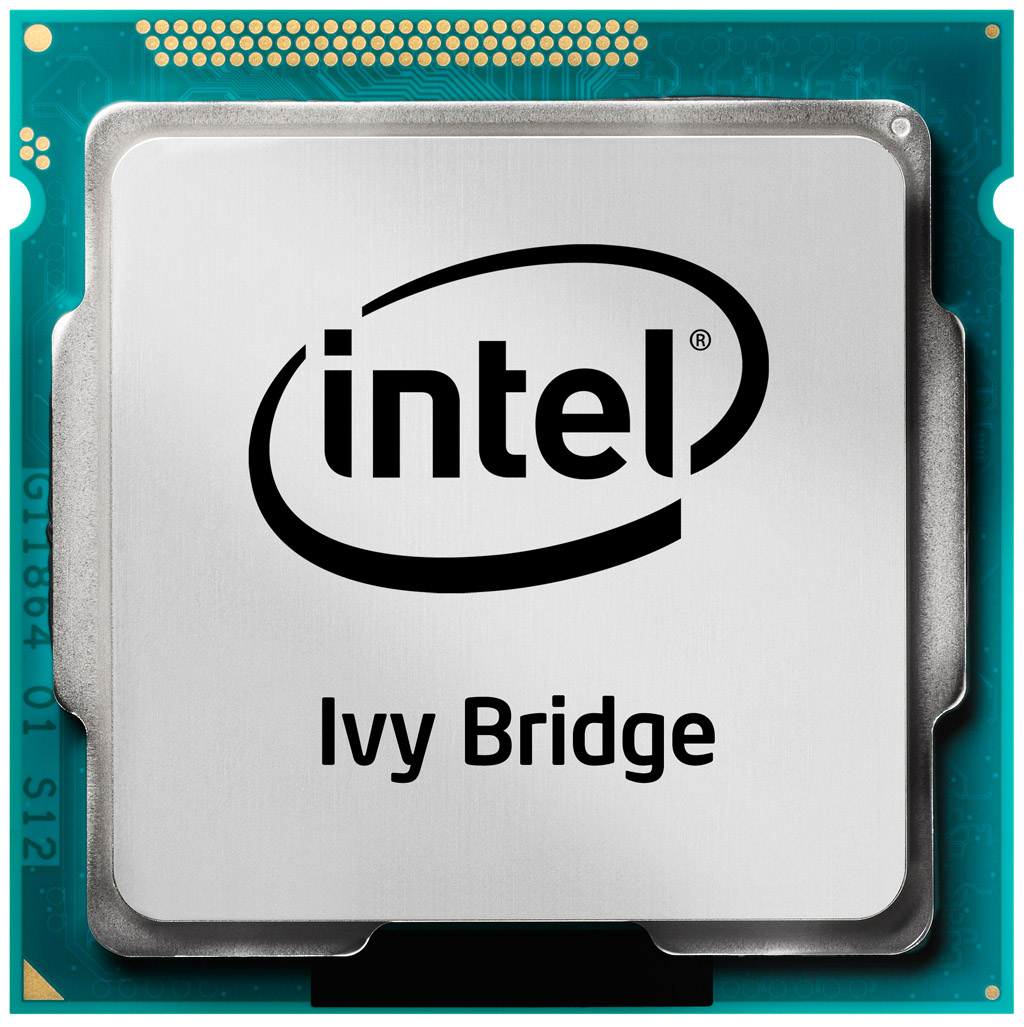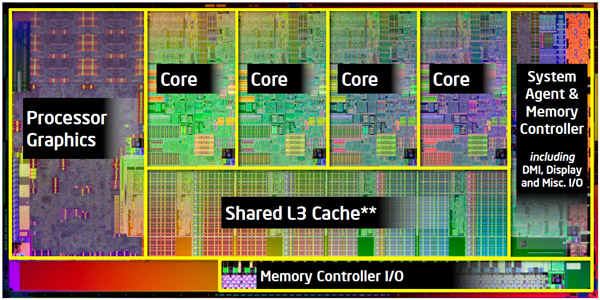Intel Core i7-3770K Review: A Small Step Up For Ivy Bridge
Ivy Bridge: Was It Worth The Wait?
Editor’s Note: Eager to show off what is has done with Intel’s Ivy Bridge architecture, system builder CyberPower PC is offering Tom’s Hardware's audience the opportunity to win a new system based on Intel’s Core i5-3570K processor. Read through our review, and then check out the last page for more information on the system, plus a link to enter our sweepstakes!
Both AMD and Intel know that great products create lofty expectations. When you follow up an Athlon with an Athlon 64, or a Core 2 with a Core i7, customers start looking for big progress from subsequent generations, too.
Well, we all know that Sandy Bridge was a home run on the desktop. Can all of the enthusiasts who posted to forums about waiting for Ivy Bridge really be faulted for hoping to see another round of impressive performance gains?
Ivy Bridge was never projected to be as impactful as its predecessor, though. The company’s “tick-tock” cadence defines alternating steps forward in processor architecture and manufacturing technology. When Intel pulls off a successful new design based on mature lithography, the improvements tend to be big, bold, and beautiful. Nehalem and Sandy Bridge, both “tocks,” left us satisfied and smiling. A process shrink typically introduces other benefits, such as smaller dies and power savings. Benchmark results, however, typically don't change as drastically.
Westmere was Intel’s most recent “tick,” heralding the arrival of 32 nm transistors. The company used more diminutive geometry to create room for additional cores on its fastest desktop-oriented CPUs, giving us chips like the Core i7-990X.
Today’s Ivy Bridge launch represents the next “tick”—a 22 nm die shrink of the same fundamental architecture we already know as Sandy Bridge. Intel is calling it a “tick-plus,” though, because there actually are a few under-the-hood improvements.
Unfortunately for desktop enthusiasts, the most significant changes center on the design’s integrated graphics engine, which most of us simply don’t utilize.
Get Tom's Hardware's best news and in-depth reviews, straight to your inbox.
Naturally, the story is different in the mobile space, where lower power consumption and “fast enough” 3D capabilities combine to enable big battery life numbers and surprisingly acceptable performance. But today’s Core i7-3770K review doesn’t cover a mobile processor. Rather, we’re looking at Intel’s fastest multiplier-unlocked model, positioned to succeed the existing Core i7-2700K and -2600K.
Meet Ivy Bridge
Intel built Sandy Bridge-based chips in three different configurations: one quad-core and two dual-core designs. The most complex implementation included 995 million transistors in a 216 mm² piece of silicon. In comparison, the biggest Ivy Bridge die incorporates 1.4 billion transistors on a 160 mm² die.
If you were to show your grandmother die shots of Sandy Bridge and Ivy Bridge, she should be able to point out where most of those 400 million new transistors were added. Clearly, the built-in graphics engine is more prominent.
Much of the expansion is attributable to an increase in execution units—the programmable shaders responsible for graphics processing—which Intel claims boost 3D performance by as much as 2x. Sandy Bridge’s HD Graphics 3000 employed 12 EUs; Ivy Bridge’s HD Graphics 4000 pushes that number to 16. HD Graphics 4000 also uniquely supports DirectX 11, up to three display outputs, OpenCL and DirectCompute, and better Quick Sync performance, all of which we’ll test for you.
The rest of the layout should look fairly familiar. Given a mainstream focus, the die driving Core i7-3770K is a quad-core, Hyper-Threaded part with 8 MB of shared L3 cache divided up into four 2 MB slices, same as the Core i7-2600K we reviewed more than a year ago. There are a handful of small tweaks to what the cores themselves can do. Intel says that those adjustments, plus tweaks in the cache and memory controller, help improve the number of instructions per clock cycle this architecture executes. We’ll be running per-clock comparisons between Ivy and Sandy Bridge to help quantify those claims as well.
| Header Cell - Column 0 | Cores / Threads | Base Freq. | Max. Turbo | L3 Cache | HD Graphics | Graphics Base Freq. | Graphics Max. Freq. | TDP (W) | Price |
|---|---|---|---|---|---|---|---|---|---|
| Third-Gen Core i7 Family | |||||||||
| 3770K | 4/8 | 3.5 GHz | 3.9 GHz | 8 MB | 4000 | 650 MHz | 1.15 GHz | 77 | $313 |
| 3770 | 4/8 | 3.4 GHz | 3.9 GHz | 8 MB | 4000 | 650 MHz | 1.15 GHz | 77 | $278 |
| 3770T | 4/8 | 2.5 GHz | 3.7 GHz | 8 MB | 4000 | 650 MHz | 1.15 GHz | 45 | $278 |
| 3770S | 4/8 | 3.1 GHz | 3.9 GHz | 8 MB | 4000 | 650 MHz | 1.15 GHz | 65 | $278 |
| Third-Gen Core i5 Family | |||||||||
| 3570K | 4/4 | 3.4 GHz | 3.8 GHz | 6 MB | 4000 | 650 MHz | 1.15 GHz | 77 | $212 |
| 3570T | 4/4 | 2.3 GHz | 3.3 GHz | 6 MB | 2500 | 650 MHz | 1.15 GHz | 45 | $194 |
| 3570 | 4/4 | 3.4 GHz | 3.8 GHz | 6 MB | 2500 | 650 MHz | 1.15 GHz | 77 | $194 |
| 3550 | 4/4 | 3.3 GHz | 3.7 GHz | 6 MB | 2500 | 650 MHz | 1.15 GHz | 77 | $194 |
| 3550S | 4/4 | 3.0 GHz | 3.7 GHz | 6 MB | 2500 | 650 MHz | 1.15 GHz | 65 | $194 |
| 3470 | 4/4 | 3.2 GHz | 3.6 GHz | 6 MB | 2500 | 650 MHz | 1.1 GHz | 77 | $174 |
| 3470T | 2/4 | 2.9 GHz | 3.5 GHz | 3 MB | 2500 | 650 MHz | 1.05 GHz | 35 | $174 |
| 3470S | 4/4 | 2.9 GHz | 3.6 GHz | 6 MB | 2500 | 650 MHz | 1.1 GHz | 65 | $174 |
| 3450 | 4/4 | 3.1 GHz | 3.5 GHz | 6 MB | 2500 | 650 MHz | 1.1 GHz | 77 | $174 |
| 3450S | 4/4 | 2.8 GHz | 3.5 GHz | 6 MB | 2500 | 650 MHz | 1.1 GHz | 65 | $174 |
We’re still looking at a dual-channel memory controller, though it’s now rated for DDR3-1600 data rates. Given the right memory, enthusiasts have the option to overclock as high as 2667 MT/s (up from 2133 MT/s) in more granular 200 MHz increments.
And although Ivy Bridge carries over Sandy Bridge’s 16 lanes of on-die PCI Express connectivity, we now have official PCIe 3.0 support for cards like AMD’s Radeon HD 7000s and Nvidia’s GeForce GTX 680.
All told, Ivy Bridge is yet another highly integrated processor design from Intel. Its pieces were constructed by independent teams throughout the world—engineers in Israel are responsible for the IA cores, a team in Folsom, CA built the graphics engine, and a second team in Folsom implemented the interconnects, cache, and system agent. Of course, a process development group up in Oregon made sure it’d all come together on the new 22 nm node.
What is the final product capable of? Let’s walk through Ivy Bridge step by step, exploring where it excels and digging into where it falls short of the community’s expectations.
Current page: Ivy Bridge: Was It Worth The Wait?
Next Page The Ivy Bridge Core: I Think I Know You-
tecmo34 Nice Review Chris...Reply
Looking forward to the further information coming out this week on Ivy Bridge, as I was initially planning on buying Ivy Bridge, but now I might turn to Sandy Bridge-E -
jaquith Great and long waited review - Thanks Chris!Reply
Temps as expected are high on the IB, but better than early ES which is very good.
Those with their SB or SB-E (K/X) should be feeling good about now ;) -
xtremexx saw this just pop up on google, posted 1 min ago, anyway im probably going to update i have a core i3 2100 so this is pretty good.Reply -
ojas it's heeearrree!!!!! lol i though intel wan't launching it, been scouring the web for an hour for some mention.Reply
Now, time to read the review. :D -
zanny It gets higher temps at lower frequencies? What the hell did Intel break?Reply
I really wish they would introduce a gaming platform between their stupidly overpriced x79esque server platform and the integrated graphics chips they are pushing mainstream. 50% more transistors should be 30% or so more performance or a much smaller chip, but gamers get nothing out of Ivy Bridge. -
JAYDEEJOHN It makes sense Intel is making this its quickest ramp ever, as they see ARM on the horizon in today's changing market.Reply
They're using their process to get to places they'll need to get to in the future -
verbalizer OK after reading most of the review and definitely studying the charts;Reply
I have a few things on my mind.
1.) AMD - C'mon and get it together, you need to do better...2.) imagine if Intel made an i7-2660K or something like the i5-2550K they have now.
3.) SB-E is not for gaming (too highly priced...) compared to i7 or i5 Sandy Bridge
4.) Ivy Bridge runs hot.......
5.) IB average 3.7% faster than i7 SB and only 16% over i5 SB = not worth it
6.) AMD - C'mon and get it together, you need to do better...
(moderator edit..) -
Pezcore27 Good review.Reply
To me it shows 2 main things. 1) that Ivy didn't improve on Sandy Bridge as much as Intel was hoping it would, and 2) just how far behind AMD actually is... -
tmk221 It's a shame that this chip is marginally faster than 2700k. I guess it's all AMD fault. there is simply no pressure on Intel. Otherwise they would already moved to 8, 6, and 4 cores processors. Especially now when they have 4 cores under 77W.Reply
Yea yea I know most apps won't use 8 cores, but that's only because there was no 8 cores processors in past, not the other way around




